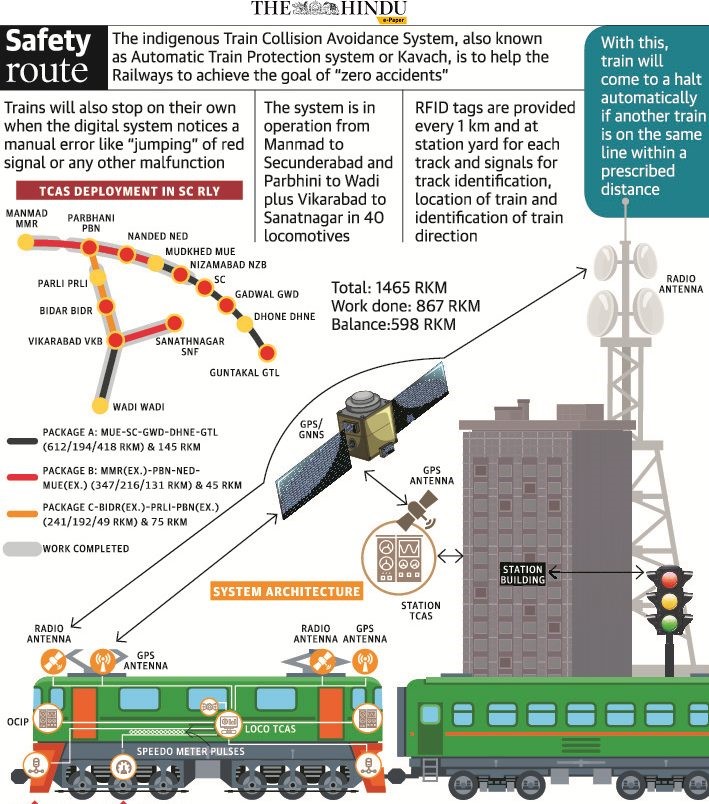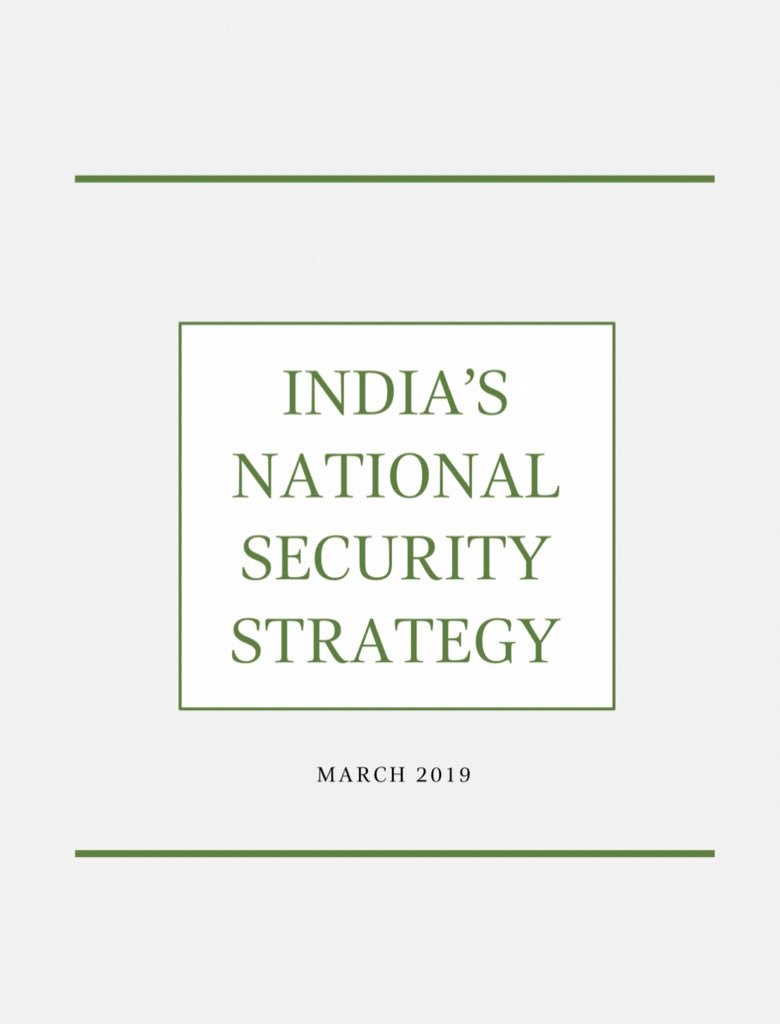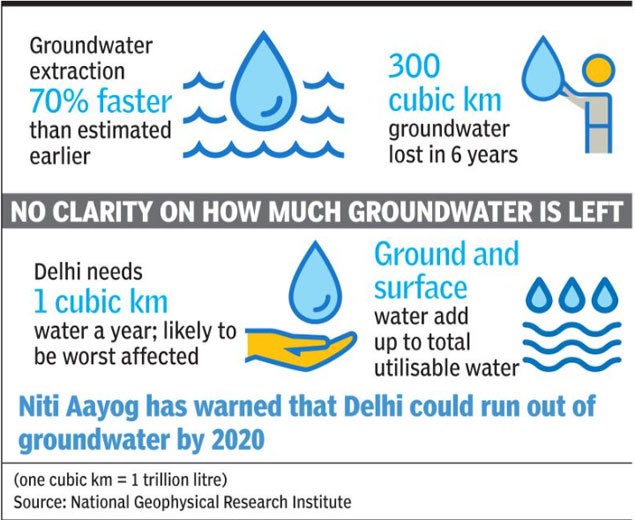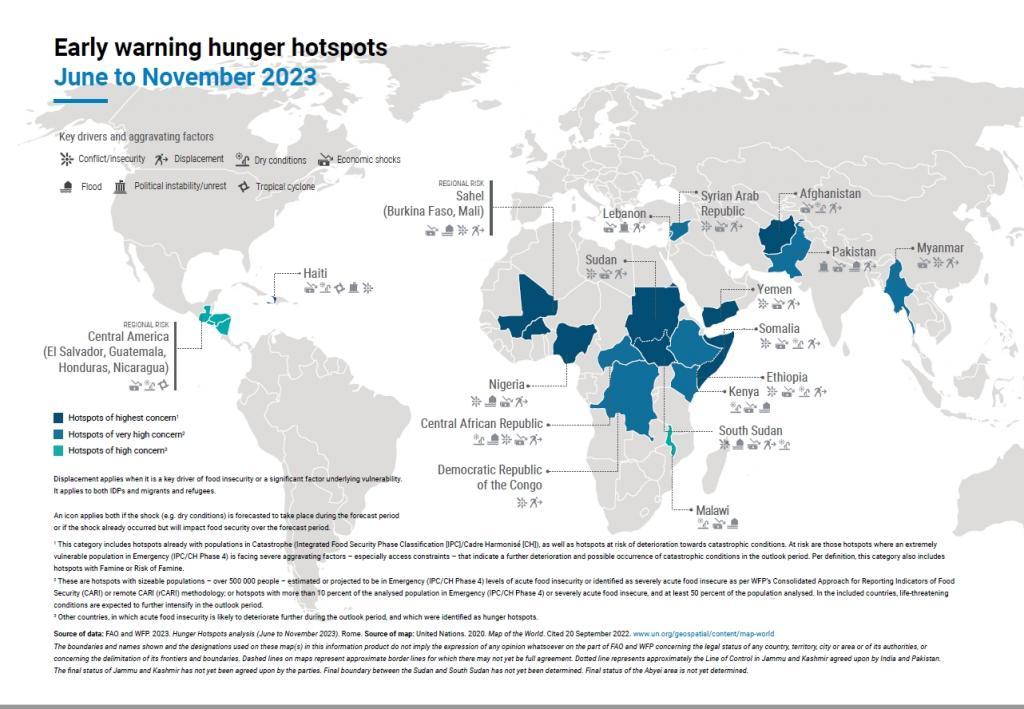- TCAS-Kavach in Railway Safety
- National Security Strategy
- GST Appeal Amnesty Scheme 2023.
- Composite Water Management Index’ Report
- Protection of Women from Domestic Violence Act, 2005
- HUNGER HOTSPOTS
TCAS-Kavach in Railway Safety
Context:
The recent tragic train collision in Vizianagaram district, Andhra Pradesh, which led to 14 fatalities and 50 injuries, underscores the vital need for the adoption of Traffic Collision Avoidance Systems (TCAS).
In this particular case, the absence of the indigenous TCAS system known as ‘Kavach’ on the affected route emphasizes the urgency of enhancing safety measures in the railway sector.
What is TCAS-Kavach?
- Cab Signalling System: ‘Kavach’ functions as a cab signalling train control system with anti-collision capabilities, serving as a vigilant protector of the existing signaling infrastructure.
- Development: The Indian Railways Research Designs and Standards Organisation (RDSO) developed ‘Kavach’ over a span of ten years, beginning in 2012.
- Warning Mechanism: ‘Kavach’ is specifically designed to alert the train’s locomotive operator if they overlook a ‘red signal’ and continue at a speed that would surpass the signal. If the operator fails to reduce the speed below 15 kilometers per hour, ‘Kavach’ automatically applies the brakes, bringing the train to a halt.
Deployment of Kavach
Components: The ‘Kavach’ system consists of three essential components: Radio Frequency Identification (RFID) technology installed in the tracks, RFID readers, computers, and brake interface equipment in locomotives, along with radio infrastructure like towers and modems at railway stations.
Intercommunication: These components communicate seamlessly with one another, allowing real-time monitoring of train movements and the transmission of signals to locomotives. Visual obstacles, such as hilly terrain or haze, do not disrupt their functionality.
Antenna Communication: Locomotives are equipped with antennas that communicate with towers at railway stations and display warnings to the driver on their monitor
Preventing Accidents with Kavach
Testimonial Evidence: The Union Railway Minister’s test ride of ‘Kavach’ effectively showcased its ability to prevent accidents. In one instance, two trains heading toward each other on the same track at high speeds were halted 400 meters before a collision occurred due to ‘Kavach’ automatically applying the brakes.
Human Error: The train accident in Andhra Pradesh was attributed to the human error of the deceased locomotive pilot. If ‘Kavach’ had been in place, it could have alerted the pilot about exceeding the red signal and applied emergency brakes, potentially preventing the accident.
Cost and Implementation Challenges
Deployment Cost: The implementation of ‘Kavach’ comes with a cost of ₹50 lakh per kilometer for the Indian Railways.
Coverage: Presently, ‘Kavach’ covers only 1,500 kilometers of rail routes, which is a small fraction of the total 68,000-kilometer network. Expanding its coverage, especially on high-density routes, remains a significant challenge.
Budget Allocation: The Indian Railways has allocated ₹4,000 crore under the Signalling and Telecom budget, including ₹2,000 crore from the Rashtriya Rail Sanraksha Kosh (RRSK) fund for the implementation of ‘Kavach.’
Slower pace: However, the limited allocation may lead to gradual progress, with an estimated installation of only about 2,500 to 3,000 kilometers during the year.
National Security Strategy
Context:
- India is undertaking a historic endeavor by initiating the development of its first-ever National Security Strategy (NSS).
- The National Security Council Secretariat (NSCS) is actively gathering insights and inputs from various Central ministries and departments to establish a comprehensive strategy that will play a crucial role in safeguarding the nation’s interests.
Explained: National Security Strategy
- Crucial Milestone: India’s NSS represents its inaugural comprehensive document outlining security objectives and strategies.
- Periodically Updated: The NSS adapts over time to address both traditional and non-traditional threats, fostering accountability among agencies responsible for implementation.
- Guiding Holistic Security: The NSS will act as a guiding framework for military, defense, and security reforms, providing a comprehensive perspective on national security, threats, and strategies to counter them.
Scope and Content of India’s NSS
Modern Challenges: The NSS is set to encompass a wide range of contemporary challenges, including financial and economic security, food and energy security, information warfare, critical information infrastructure vulnerabilities, supply chain concerns, and environmental issues.
Comprehensive Approach: It will employ a comprehensive approach to tackle emerging threats in alignment with India’s evolving security landscape.
Global Precedents
- Established Nations with NSS: Developed nations with strong military and security infrastructures maintain National Security Strategies that are periodically updated. The United States, the United Kingdom, and Russia have released their NSS documents.
- China’s Comprehensive National Security: China has a closely integrated Comprehensive National Security strategy closely linked to its governance structure.
- Pakistan’s National Security Policy: Pakistan recently unveiled a National Security Policy for 2022-2026, outlining its national security objectives and priorities.
India’s Imperative for a National Security Strategy
- Long-Debated Need: The concept of a National Security Strategy for India has been a subject of longstanding discussion within military circles and the strategic community.
- Urgency in Uncertain Times: Escalating geopolitical tensions and an uncertain global environment have heightened the urgency for India to formulate a comprehensive strategy.
- Relevance Highlighted: Experts and former officials stress that a national security strategy is essential to offer clear political direction to the Armed Forces, guide military reforms, and effectively address modern security challenges.
Past Attempts and Hurdles
- Failed Attempts: India has made three previous attempts to develop a national security strategy, all of which were unsuccessful.
- Political Hesitation: Some speculate that political hesitancy, driven by concerns about accountability in defense management, may have hindered the release of the strategy.
- Varied Views: There have been differing opinions within the strategic community regarding the absence of a national security strategy, spanning from a lack of cohesive government efforts to intentional non-disclosure of national security objectives.
Conclusion
India’s journey to formulate its National Security Strategy represents a significant milestone in its pursuit of a well-defined and coordinated security approach.
As India progresses, this inaugural strategy holds the promise of providing a roadmap to address intricate security challenges, ensuring the protection of national interests and fostering a secure future in an ever-changing world.
Preventing Accidents with Kavach
Testimonial Evidence: The Union Railway Minister’s test ride of ‘Kavach’ effectively showcased its ability to prevent accidents. In one instance, two trains heading toward each other on the same track at high speeds were halted 400 meters before a collision occurred due to ‘Kavach’ automatically applying the brakes.
Human Error: The train accident in Andhra Pradesh was attributed to the human error of the deceased locomotive pilot. If ‘Kavach’ had been in place, it could have alerted the pilot about exceeding the red signal and applied emergency brakes, potentially preventing the accident.
Cost and Implementation Challenges
Deployment Cost: The implementation of ‘Kavach’ comes with a cost of ₹50 lakh per kilometer for the Indian Railways.
Coverage: Presently, ‘Kavach’ covers only 1,500 kilometers of rail routes, which is a small fraction of the total 68,000-kilometer network. Expanding its coverage, especially on high-density routes, remains a significant challenge.
Budget Allocation: The Indian Railways has allocated ₹4,000 crore under the Signalling and Telecom budget, including ₹2,000 crore from the Rashtriya Rail Sanraksha Kosh (RRSK) fund for the implementation of ‘Kavach.’
Slower pace: However, the limited allocation may lead to gradual progress, with an estimated installation of only about 2,500 to 3,000 kilometers during the year.
GST Appeal Amnesty Scheme 2023
Introduction
In its 52nd meeting, the GST Council introduced the GST Amnesty Scheme 2023, allowing taxpayers to contest demand orders issued by tax inspectors until January 31, 2024.
The key points of the GST Amnesty scheme for filing appeals on GST demand notices are as follows:
- Extended Filing Time for Appeals: Taxpayers now have until January 31, 2024, to file appeals against demand orders related to the GST, as a response to the 52nd Goods and Services Tax Council meeting.
- Pre-Deposit Requirements: Taxpayers must pay a pre-deposit amount of 12.5% of the tax under dispute to avail the scheme’s benefits. At least 20% of the tax under dispute (equivalent to 2.5% of the tax amount) must be debited from the electronic cash ledger.
- Coverage and Conditions: The scheme covers cases where appeals were not filed within the stipulated time frame under Section 107 of the CGST Act, 2017, for demand orders passed on or before March 31, 2023. Appeals can be filed in instances involving tax liability along with interest and penalty, excluding cases related solely to interest, fines, and penalties.
- Scope of Sections 73 and 74: Sections 73 and 74 apply to situations where the tax department identifies discrepancies such as tax shortfalls, non-payment, wrongful refund of input tax credit, or alleged misstatement or suppression of facts.
- Exclusions from the Amnesty Scheme: The amnesty scheme does not cover assessment orders issued under Sections 62, 63, and 64, primarily affecting non-registered entities or non-filers of returns.
The introduction of this scheme aims to provide relief to taxpayers dealing with challenges related to timely appeals and promote smoother dispute resolution within the GST framework.
The GST Amnesty Scheme 2023 offers the following:
- Amnesty Plan for Tax Appeals: Taxpayers can contest demand orders issued by tax inspectors until January 31, 2024, with an extended deadline for filing appeals.
- Increased Pre-Deposit: To utilize the extended appeal period, taxpayers must make an increased pre-deposit of 12.5% of the tax demand, with at least 20% or 2.5% of the tax under dispute debited from the Electronic Cash Ledger.
- Clarification on Property Attachments: Property attachments by tax authorities are now limited to one year, ensuring that temporary seizures of assets do not unduly affect businesses.
- Facilitating Taxpayers: The GST Council’s decisions aim to make the GST system more taxpayer-friendly, encouraging compliance with tax regulations and expeditious dispute resolution.
- Efficiency and Transparency: The amendments introduced by the GST Council enhance transparency and fairness in the GST system, streamlining procedures related to appeals and property attachments, creating a more efficient and taxpayer-friendly GST regime.
Composite Water Management Index’ Report
Introduction:
NITI Ayog is considering discontinuing the Composite Water Management Index (CWMI) report, which was launched five years ago to address India’s water challenges and assess states based on 28 parameters.
What is Composite Water Management Index’ report (CWMI)?
- The CWMI was created by NITI Aayog to improve water resource management and conservation in India.
- It offers an annual overview of the water sector’s status and the performance of states and Union Territories. It assesses both the overall progress in water management and performance improvements over time.
- The index covers nine themes with 28 indicators related to groundwater and surface water restoration, irrigation, watershed development, water supply, and governance, developed in collaboration with the Ministries of Water Resources, Drinking Water & Sanitation, and Rural Development.
Why this index was launched and what its significance?
- The need for this index stems from India’s severe water crisis, where millions of lives and livelihoods are at risk.
- Currently, 600 million Indians face high to extreme water stress, with two lakh people dying annually due to inadequate access to safe water.
- By 2030, the country’s water demand is projected to be twice the available supply, leading to severe water scarcity and potential GDP loss.
Findings
- The latest CWMI report, covering 2018-19 and 2019-20, highlights that water scarcity is a national problem, with declining per capita water availability.
- The report assesses the performance of states, with Gujarat leading, Rajasthan improving, and Goa dropping in rank.
Water governance in India is crucial to address issues of distribution, over-exploitation, and pollution of water resources, exacerbated by population growth and climate change.
Significance of CWMI
- The CWMI was designed to promote competitive and cooperative federalism, supporting evidence-based policy decisions for efficient water resource management.
- However, it is currently under scrutiny due to its limited utilization in planning, decision-making, policy formulation, and research.
- Consultations are ongoing to determine its future, including the possibility of expanding its coverage to districts and exploring alternative methods for water resource indexing.
Protection of Women from Domestic Violence Act, 2005
Context:
- The Supreme Court is set to determine whether a transgender woman who has undergone sex-reassignment surgery can be categorized as an “aggrieved person” within the scope of Section 2(a) of the Domestic Violence Act, 2005.
- This case originates from an appeal made by the transgender woman’s spouse, contesting a Bombay High Court ruling that recognized individuals who self-identify their gender as aggrieved persons under the Act.
What is Domestic Violence ?
- Domestic violence entails the abuse of power by one adult in a relationship to exert control over another, often inducing fear through various forms of abuse, such as physical assault, psychological and social abuse, financial exploitation, and sexual assault.
- The frequency of domestic violence can vary from intermittent to occasional or persistent.
Types of Violence
- The Domestic Violence Act, 2005 defines different forms of domestic violence, including physical abuse, sexual abuse, verbal and emotional abuse, and economic abuse.
- Physical abuse covers acts causing bodily harm, while sexual abuse pertains to any conduct of a sexual nature that degrades or humiliates a woman.
- Verbal and emotional abuse encompasses insults and threats, and economic abuse involves withholding financial support and restricting access to resources.
Aggrieved Person
- An “aggrieved person,” as per Section 2(a) of the Act, is a woman who alleges that she has experienced domestic violence within a domestic relationship with the respondent.
Salient Features
- A “domestic relationship,” according to Section 2(f), includes shared households between individuals related by consanguinity, marriage, or akin to marriage.
- The Protection of Women from Domestic Violence Act, 2005 (PWDVA) offers significant support for women facing domestic violence. It emphasizes legal assistance, support services, and the appointment of Protection Officers and Service Providers to provide medical, shelter, legal, counseling, and other forms of support.
- Protection Officers can be government servants or social workers and are appointed within the jurisdiction of each Judicial Magistrate.
- The Act provides temporary and emergency relief, combining elements of civil and criminal law.
- It does not change the existing personal law regime on family matters but offers supplementary relief to empower women during crises.
- Women can pursue relief under other laws even after obtaining relief under the PWDVA. The Act also outlines the procedure for obtaining orders and deems the breach of an order a criminal offense.
Hunger Hotspots
Introduction
According to a recent report released by the Food and Agriculture Organization of the United Nations (FAO) and the World Food Programme (WFP), 18 hunger hotspots are expected to experience a worsening of acute food insecurity through April 2024.
Key Highlights from the Report:
- These hotspots encompass 22 countries or territories, including two regional clusters.
- The selection of these hunger hotspots in the report is based on consensus among experts in food security, as well as analysts specializing in conflict, economic factors, and natural hazards from both FAO and WFP.
- The identified countries include Burkina Faso, Mali, Sudan, South Sudan, Niger, Chad, the Democratic Republic of the Congo, Palestine, Syrian Arab Republic, Afghanistan, Pakistan, Djibouti, Yemen, Somalia, Ethiopia, Malawi, Zimbabwe, Haiti, El Salvador, Guatemala, Honduras, and Nicaragua.
- Among these, Burkina Faso, Mali, South Sudan, and Sudan in Africa are of the highest concern.
- The report offers country-specific recommendations for addressing emergency response priorities and anticipatory actions to tackle existing humanitarian needs.
Food and Agriculture Organization (FAO):
- FAO is a specialized agency within the United Nations dedicated to leading global efforts in the fight against hunger.
- World Food Day is observed annually on the 16th of October.
- FAO is headquartered in Rome, Italy.
- The organization closely collaborates with sister organizations such as the World Food Programme and the International Fund for Agricultural Development (IFAD).






